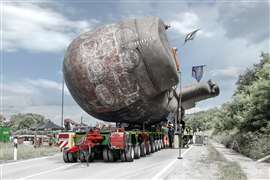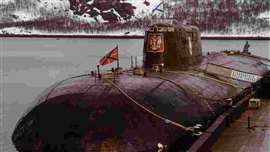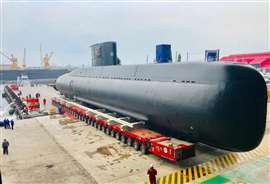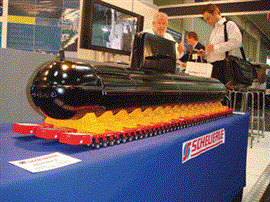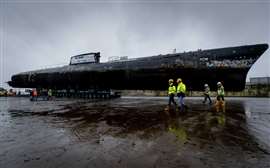Mastering the impossible: Moving submarines
13 November 2024
Submarine transportation is an engineering feat requiring skilful planning, precision, and adaptability, often in challenging conditions. Recent projects showcase the logistical mastery needed to relocate these massive, complex vessels, whether overland or up from the sea floor.
From Germany-based Kübler’s meticulous handling of a decommissioned U17 to ALE’s challenging land transport and Mammoet’s underwater expertise with the Kursk, each mission reveals distinct approaches and innovations in heavy lifting.
Below are some of the most remarkable submarine moves which demonstrate the sophisticated solutions deployed by top heavy-lift operators worldwide.
Epic journey across Germany
Germany-headquartered Kübler haulage company used 30 TII Scheuerle InterCombi axle lines to transport a U17 submarine from the Speyer Technology Museum to its sister museum in Sinsheim, Germany.
As the structure was 90 metres long and 10 metres high, and the journey involved navigating narrow roads, low bridges, and high-voltage power lines, it was a highly complex operation.
Kübler and TII Scheuerle equipment rotated the submarine multiple times, completing this impressive four-week journey. The submarine is now set to receive visitors at the museum from summer 2025.
Beating the weather
 The historic SAS Assegaai, a former South African Navy submarine, in preparation for the trip to its new home in a museum. (Photo: Vanguard)
The historic SAS Assegaai, a former South African Navy submarine, in preparation for the trip to its new home in a museum. (Photo: Vanguard)
Specialist contractor Vanguard battled heavy rain and gale force winds to get the SAS Assegaai, a former South African Navy submarine, to its new home. SAS Assegaai had to be transported 1.5 km from the Navy Dockyard to the new Naval Heritage site in Simons Town, South Africa.
Vanguard engineered a solution to move the 58 metre long and 6 metre wide vessel using 34 axle lines of specialized trailer from Goldhofer. It had to be lifted, transported and then positioned on plinths for display.
Raising the Kursk
ICST previously reported on Mammoet successfully raising the sunken Kursk submarine from the Barents Sea in 2001.
This highly complex salvage operation showcased the company’s engineering prowess and experience in underwater lifting, marking a significant achievement in challenging offshore recovery.
Multi-stage salvage
In another notable project, Mammoet was awarded a contract to salvage a partially sunken submarine. Leveraging their heavy-lift expertise, they planned a multi-stage process involving underwater support and advanced lifting technology to bring the vessel safely to shore.
Handling delicate loads
Heavy lift and transportation specialist ALE managed the transport of the KRI Alugoro (405) decommissioned submarine using their fleet of specialized heavy-load trailers in Indonesia.
Weighing 1,331 tonnes, ALE transported the submarine from the fabrication shop to the quayside using 60 axle lines of self propelled modular transport (SPMT).
ALE then provided the winches and ballasting required to load-out the 61 metre long submarine onto a barge and sea-fastened it to the deck.
The manoeuvres were performed using sixteen 150 tonne capacity climbing jacks, twelve 400 tonne per hour capacity ballast pumps and four 8 tonne capacity precision winches.
ALE said one of the project’s challenges was working within the tidal windows.
Overland transport
An Australian Navy submarine was moved overland to a maintenance facility. Navigating through city streets and tight spaces, the crew employed modular transporters to safely transfer this critical asset, highlighting skilled planning and logistical acumen in military asset management.
Foxtrot for recycling
Heavy lift giant Sarens was commissioned by Struijk Groep to perform the load-in and transport of the Foxtrot submarine measuring 90 metres long and weighing 1,500 tonnes. In 1991 the discarded vessel was taken to the Netherlands by a group of entrepreneurs from Den Helder. The municipality of the area decided to stow the rusting submarine in Vlaardingen.
The Sarens team deployed Kamag 2400ST transporter, custom-built stools and sheerlegs. The equipment was mobilised onsite in two days and was set up in another two days. Heavy rain made the mobilisation challenging but it was safely completed in time.
STAY CONNECTED



Receive the information you need when you need it through our world-leading magazines, newsletters and daily briefings.
CONNECT WITH THE TEAM








